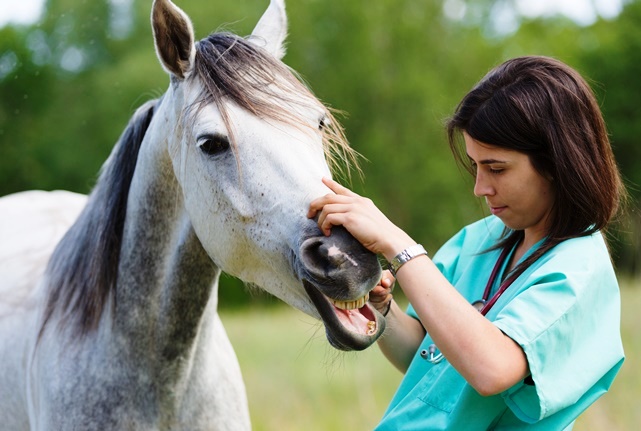A serious outbreak of equine herpesvirus type 1 (EHV-1), an infectious viral disease, is currently spreading among horse populations in Europe. This outbreak was first detected in Valencia, Spain, in February 2021 during a month-long equestrian competition. Multiple dozens of horses contracted an initially unknown disease, with up to 20 horses being treated daily for a variety of symptoms. Some of these symptoms were unusually severe. Many horses showed drastic behavioral changes, pointing to neurological damage, whereas other animals experienced respiratory distress, blood clots, or general malaise. Before the origin of the disease could be identified and before the vast majority of horses could be quarantined, the Spanish competition ended and more than 600 horses returned to their home stables located throughout Europe. Once the pathogen was identified as EHV-1, the Fédération Équestre Internationale (International Federation for Equestrian Sports) postponed or cancelled all European equine events through May 2021. Concerns over transmission of this virus may extend the pause in equine events throughout Europe beyond this spring. See also: Agricultural science (animal); Animal virus; Herpes; Horse production; Infectious disease; Virus

Equine herpesvirus type 1, also known as equid alphaherpesvirus 1, is a double-stranded DNA virus belonging to the Herpesviridae family of viruses. Nine different types of equine herpesvirus are known, with EHV-1 considered to be the most pathogenic. In the most serious cases, EHV-1 infection leads to equine herpes myeloencephalopathy (EHM), which causes inflammation of and damage to blood vessels in the brain and spinal cord. Clinical signs of EHM include impaired coordination (ataxia), inability to stand, and loss of bladder control. Occasionally, unusual aggressive behavior is reported. Other forms of EHV-1 infection may lead to nonneurological conditions, including respiratory disease, organ damage, high fever, spontaneous abortion (in pregnant mares), and neonatal death. In most previous outbreaks, symptoms were predominantly mild, with most infected animals making a full recovery. However, the outbreak first detected in Spain has been particularly severe, leading to the death of more than 20 horses. See also: Inflammation; Nervous system (vertebrate); Nervous system disorders; Pathogen; Virus classification
Direct horse-to-horse contact, especially via exhaled droplets from the respiratory tract of an infected horse, is the most prevalent form of virus transmission. In addition, EHV-1 can be spread indirectly through contact with physical objects (for example, cloths, grooming equipment, and feed buckets) contaminated with the virus. Treatment of infected horses is supportive because no antiviral drugs are completely effective.
Vaccines can control the virus, but they do not prevent EHM. Vaccines reduce viral shedding, thereby inhibiting transmission of EHV-1 to other horses. However, EHV-1 has a relatively slow transmission time. Thus, experts suggest that periodic testing for EHV-1 be instituted for horses that are suspected of being exposed to the virus. In addition, veterinarians and epidemiologists recommend that transportation of horses to other locations be halted until infected horses are declared healthy. Together, these preventative health measures are expected to slow or stop viral transmission, thereby avoiding a pandemic. See also: Disease ecology; Epidemiology; Vaccination





